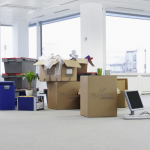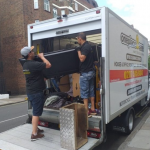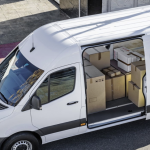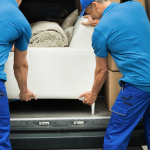Packing Fragile Items Like a Pro During Your Move
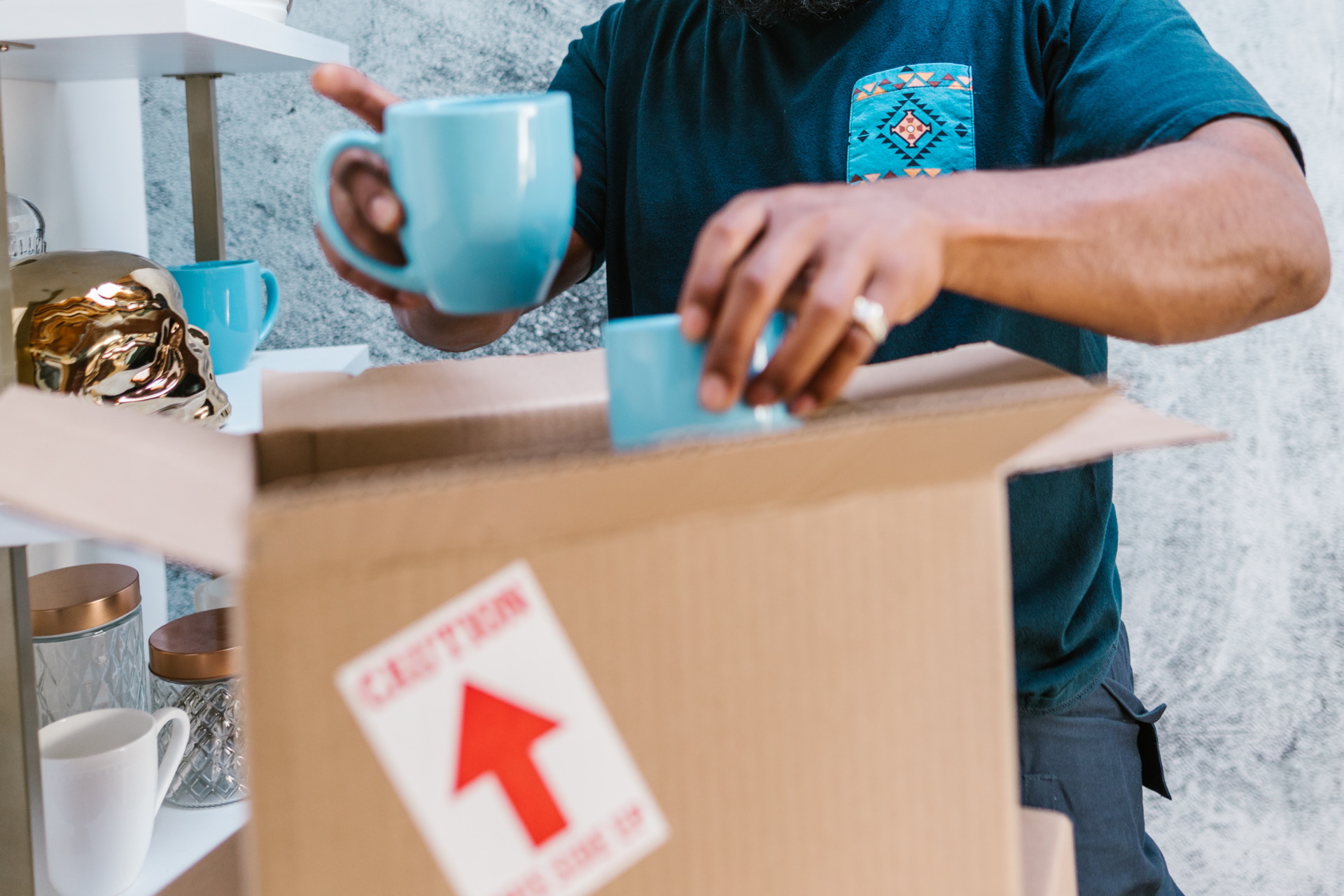
Are you getting ready to move and worried about how to safely pack all your fragile items? Proper packing is crucial to ensure your delicate belongings arrive at your new home in one piece. This article will discuss the importance of packing fragile items correctly, the risks of improper packing, the supplies you need, and tips on how to pack like a pro. Whether it’s glassware, electronics, artwork, or furniture, we’ve got you covered in protecting your valuables during the moving process. Let’s dive in and learn how to ensure the safe transport of your fragile items!
Why is Proper Packing Important for Fragile Items?
Proper packing of fragile items is crucial during a move to ensure their safety and secure transportation. Expert techniques and tips can help prevent damage and minimise the risks of handling delicate objects.
Individuals can significantly reduce the chances of breakage by employing safety measures such as using adequate padding, cushioning fragile items with bubble wrap, and securing them in sturdy boxes.
Efficient methods, such as packing items tightly to prevent shifting during transit and labelling boxes with ‘Fragile’ warnings, can facilitate a smooth and secure relocation process.
Incorporating these strategies safeguards valuable possessions and provides peace of mind, knowing everything has been packed with care and attention to detail.
What are the Risks of Improper Packing?
Improper packing of fragile items poses significant risks during a move, including potential breakage, damage to valuable possessions, and safety concerns. Handling delicate items becomes challenging without proper cushioning, labelling, and organisation.
Fragile items such as glassware, china, artwork, and electronics require extra care to prevent breakage. Appropriate packing materials like bubble wrap, foam padding, and sturdy boxes can help absorb shock and protect the items from impact. Labelling boxes as ‘fragile’ ensures that movers handle them cautiously.
It’s essential to plan the packing process meticulously to avoid overcrowding boxes and to distribute weight evenly. Individuals can minimise the risks of transporting delicate possessions by following these protective measures and organised handling practices.
What Supplies Do You Need for Packing Fragile Items?
When packing fragile items, essential supplies like bubble wrap, packing paper, sturdy boxes, and secure cushioning are indispensable for ensuring safe handling and protection during transportation and storage.
Bubble wrap is crucial for wrapping delicate items individually. It provides a protective layer that absorbs shocks and prevents breakage.
Packing paper fills any gaps within the boxes and secures the items in place, minimising movement during transit.
Choosing the appropriate box size is essential to avoid overpacking and ensure that items have enough space for cushioning material while maintaining structural integrity.
These supplies work together to create a secure package that safeguards fragile items and facilitates efficient unpacking at the destination.
Boxes
Choosing the right boxes is essential for packing fragile items efficiently. Opt for robust boxes that can withstand transportation and secure storage for fragile items. Ensure correct labelling and organisational structure for easy handling.
When selecting boxes, consider their size to ensure a snug fit for the fragile items, minimising movement during transit. Look for boxes with double-wall construction for additional protection against impacts. Bubble wrap or packing chips can cushion delicate items inside the boxes. Label each box with clear instructions such as ‘Fragile’ and ‘This Way Up’ to guide handlers. Remember, proper packing is crucial in ensuring your fragile items reach their destination unharmed.
Packing Paper
Packing paper is crucial for securely wrapping fragile items and providing cushioning to protect them during handling and transportation. Its efficient use ensures the safe unpacking and storage of delicate possessions.
This type of special paper acts as a barrier against potential damages by absorbing shocks and reducing the impact of any movements during the moving process. By cushioning fragile items such as crockery, glassware, or electronics, packing paper offers protection that shields these objects from scratches, breakage, or other harm. Its lightweight and flexible nature makes it easy to mould around various shapes, ensuring a snug fit that keeps items in place with minimal risk of shifting or sliding during transit.
Bubble Wrap
Bubble wrap serves as a versatile packing material, providing superb cushioning for delicate items, safeguarding them during transit to ensure their safety. Its efficient use enhances the safety of delicate possessions during handling.
This material is designed to absorb and disperse impact, reducing the risk of damage to your valuable items. By creating a protective barrier, bubble wrap helps prevent scratches, dents, and breakage that can occur during item movement.
For fragile items, a straightforward method involves wrapping them in multiple layers of bubble wrap, securely fastened with tape to ensure a snug fit. Remember to leave extra wrapping around the corners and edges for added protection. This method ensures that your items are safeguarded against bumps and shocks, giving you peace of mind during transit.
Packing Peanuts
Packing chips are excellent for cushioning and protecting fragile items during handling and transportation. Their efficient use ensures secure packing and minimises the risk of damage to delicate possessions.
These lightweight and versatile packaging materials create a protective barrier around items, absorbing impact and preventing them from shifting or colliding during transit. By filling empty spaces within boxes, packing chips help distribute weight evenly and reduce the chances of breakage. Their static-free nature makes them ideal for delicate electronic devices sensitive to static electricity. With the proper handling techniques, such as layering chips strategically and securing items tightly, one can ensure that valuable possessions arrive safely at their destination.
Tape
Selecting the appropriate tape is crucial for securing packed boxes containing fragile items. Proper taping ensures safe handling, transportation, and easy unpacking of delicate possessions.
The right type of tape acts as a sturdy shield around fragile items, preventing them from shifting, breaking, or getting damaged during transit. It provides an extra layer of protection that keeps the box’s contents intact.
Using strong tape not only safeguards the items inside but also makes it easier for movers to lift and carry the boxes without worrying about them coming apart. When it comes time to unpack, the right tape allows for swift and hassle-free access to your fragile possessions, ensuring they remain unharmed throughout the moving process.
How to Pack Fragile Items Like a Pro?
Packing fragile items like a pro involves wrapping each item individually, using appropriate box sizes, filling empty spaces for cushioning, and labelling boxes as ‘fragile.’ Organised handling with proper protection ensures the safe transport of delicate possessions.
- When wrapping delicate items, consider using materials like bubble wrap, packing paper, or foam to provide an extra layer of protection.
- Select sturdy boxes that are not too large to avoid overpacking and potential damage. Place heavier items at the bottom and lighter ones on top to prevent crushing.
- Utilise soft materials like towels or clothing to fill gaps and ensure items do not shift during transit.
- Labelling each box clearly as ‘fragile’ alerts handlers to exercise caution and aids in the safe arrival of your fragile belongings.
Wrap Each Item Individually
Wrapping each fragile item individually is a professional technique for ensuring maximum protection and cushioning during handling and transportation. This method helps prevent damage and breakage while maintaining organised packing.
By individually wrapping fragile items, you create an extra layer of defence against accidental bumps or drops during the moving process. Proper cushioning also minimises the risk of scratches and chips, preserving the integrity of delicate possessions. Labelling each item allows for easy identification, ensuring that movers handle them carefully and place them in the designated spots at the new location. This attention to detail and efficient handling not only safeguards your fragile items but also streamlines the unpacking process, saving you time and effort.
Use Proper Box Sizes
Selecting the right box sizes is crucial for packing fragile items like a pro. Using appropriate sizes ensures secure handling and proper cushioning and prevents damage during transport, enhancing the safety of delicate possessions.
When packing fragile items, such as glassware, electronics, or delicate decorative pieces, the right box size plays a significant role in safeguarding these items. Opting for boxes that are neither too large nor too small ensures that the fragile items are snugly fitted within the packaging, reducing the risk of shifting and breakage. Choosing the correct box size allows for adequate cushioning materials like bubble wrap or packing peanuts to be placed around the items, further enhancing their protection during handling and transportation.
Fill Empty Spaces
Professionals know that filling empty spaces within boxes is vital for cushioning and protecting fragile items during transportation. By utilising this technique like a pro, breakage can be prevented effectively.
The strategic placement of foam inserts, bubble wrap, or packing peanuts is a buffer around delicate items, absorbing any impact or shock that may occur during handling. This ensures that items arrive at their destination unscathed and in their original condition.
An expert packer understands the importance of assessing each item’s specific needs and choosing the appropriate cushioning materials accordingly. This attention to detail safeguards the items themselves and contributes to a smoother and more secure transit process overall.
Label Boxes as ‘Fragile’
Labelling boxes as ‘fragile‘ is a top tip for packing delicate items. This practice ensures careful handling and secure transportation and helps prevent damage to valuable or fragile possessions.
Indicating the fragile nature of certain items on the box makes it easier for removalists and anyone handling the boxes to exercise caution. Fragile items like glassware, ceramics, or electronics require extra care during a move, and the ‘fragile‘ label acts as a visual reminder. Following this simple yet effective labelling strategy minimises the risk of accidental knocks, drops, or mishandling that could lead to costly damages. It’s a small but powerful step towards ensuring a smooth and damage-free relocation process.
What are Some Tips for Packing Specific Fragile Items?
Specific fragile items, such as glassware, crockery, electronics, artwork, mirrors, and furniture, require special care and handling during packing to prevent damage. Follow these expert tips to ensure the safety of these valuables.
- When packing glassware, it is crucial to wrap each piece individually in bubble wrap and stack them vertically in sturdy boxes.
- For pottery, use plenty of packing paper between each plate, and opt for dish boxes with dividers for added protection.
- If possible, electronics should be packed in their original boxes or wrapped in anti-static bubble wrap and placed in well-padded boxes.
- Artwork and mirrors must be secured with corner protectors, wrapped in glassine paper, and placed in picture boxes.
- Remember to dismantle furniture to avoid damage during transport.
Glassware and Dishes
Packing glassware and crockery requires gentle handling and ample cushioning to prevent breakages. Expert techniques, such as individually wrapping each piece and providing sufficient protection, ensure their safe transport.

When packing glassware and crockery, prioritising their safety is essential. Materials like bubble wrap, packing paper, or foam inserts can help create a protective barrier. Placing heavier items at the bottom of the box and lighter ones on top can also prevent crushing and damage. Labelling boxes as ‘fragile‘ can alert movers to handle them with extra care. Adopting a systematic approach and taking the time to pack items securely can significantly reduce the risk of breakage during transit.
Electronics
When packing electronics, ensure they are securely wrapped and protected to prevent damage during transportation. Expert tips include using appropriate packaging materials and handling procedures to safeguard delicate electronic items.
To further secure electronic devices, consider investing in shock-absorbing materials such as bubble wrap or foam inserts to cushion them from impact. Place items in sturdy boxes that are the right size to prevent shifting during transit, minimising the risk of potential damage. Remember to label boxes clearly to indicate the fragile nature of the contents, prompting handlers to exercise extra caution.
Secure any loose cables or accessories separately to avoid tangling and potential breakage. By following these precautions, you can help ensure that your electronics reach their destination intact and in proper working condition.
Artwork and Mirrors
Artwork and mirrors require special care when packing to prevent breakage during transportation. To ensure their safe arrival, use expert tips such as using protective coverings, securing frames, and handling with caution.
When preparing to pack artwork or mirrors, having the right materials on hand is crucial. Begin by wrapping the items in a layer of bubble wrap or foam to provide cushioning against any potential impacts. For fragile frames, reinforce them with additional protective layers before securely packaging them in a sturdy box. Labelling the boxes as fragile can alert movers to exercise extra care when handling the delicate items.
Remember, taking these precautions can help minimise the risk of damage and ensure your valuable pieces reach their destination unharmed.
Furniture
Packing furniture requires special attention to protect its delicate parts and surfaces during transportation. Expert tips include dismantling when possible, using proper padding, and secure packaging for safe handling.
- Dismantling larger furniture pieces, such as tables or wardrobes, can make them easier to transport and less prone to damage. When dismantling, remember to keep all screws and hardware organised in labelled bags.
- Utilise furniture pads or removal blankets to protect against scratches and dents. Securely wrap delicate legs or edges with extra padding to prevent any accidents during the moving process.
- Choose robust boxes or crates to securely package the dismantled components, ensuring they are tightly packed to avoid shifting during transport.



